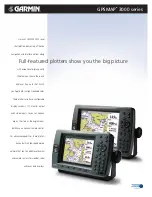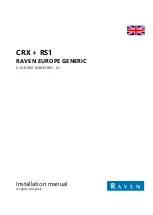
Interconnections
All connections to the AT240 are provided by a single 30 way cable assembly.
AT240 Pin Applications and Colour Code
Pin Number
Application
Wire Colour
1
supply voltage 7-36 VDC
black
2
Digital input 5 (pull-down)
brown
3
GND
red
4
Digital input 3 (opto-coupled)
orange
5
Digital output 4 (MOSFET)
yellow
6
Digital input 1 (opto-coupled)
green
7
Digital input 2 (opto-coupled)
blue
8
ADC1 (0-5V)
purple
9
Digital input 4 (opto-coupled)
grey
10
Digital output 2B (RELAY)
white
11
Digital input 6 (pull-down)
pink
12
Digital output 2A (RELAY)
light green
13
ADC2 (0-15V)
black / white stripe
14
Digital output 1B (RELAY)
brown / white stripe
15
GND
red / white stripe
16
Digital output 1A (RELAY)
orange / white stripe
17
GND
green /white stripe
18
Digital output 5 (MOSFET)
blue / white stripe
19
iButton (Dallas Key)
purple / white stripe
20
5.0V output (unregulated - switched)
red / black stripe
21
SWDIO (SDK users only)
orange / black stripe
22
SWCLK (SDK users only)
yellow / black stripe
23
Digital output 3 (MOSFET)
green / black stripe
24
3.3V output (regulated – unswitched)
grey / black stripe
25
RS232-TX1
pink / black stripe
26
RS232-TX2
pink / red stripe
27
RS232-RX1
pink / blue stripe
28
RS232-RX2
pink / green stripe
29
CANH
light blue
30
CANL
light blue / black stripe
Digital Inputs
Digital inputs 1 to 4 are normally low inputs and can be connected directly to 12/24V vehicle
circuits.
Digital inputs 5 and 6 are normally high, for use in pull-down applications. Simply switch to GND
to activate these inputs.
Note: damage may be caused to the AT240 device if a voltage source is applied to digital inputs
5 and 6.
Digital Outputs
The AT240 is capable of switching 5 different loads with 2 different types of switch, as described
below.
Low Side Switches 1 -3 are MOSFET switches to GND and must be used to switch the GND side
of the load.
Relay Switches 1 and 2 are solid state relays. These are 2 port, bi-directional switches that can
be used to interrupt/connect circuits of various types and can often be used in applications where
low side switched cannot be used directly without an external relay. Use pins 1A/1B for relay
switch 1 and pins 2A/2B for relay switch 2.





































